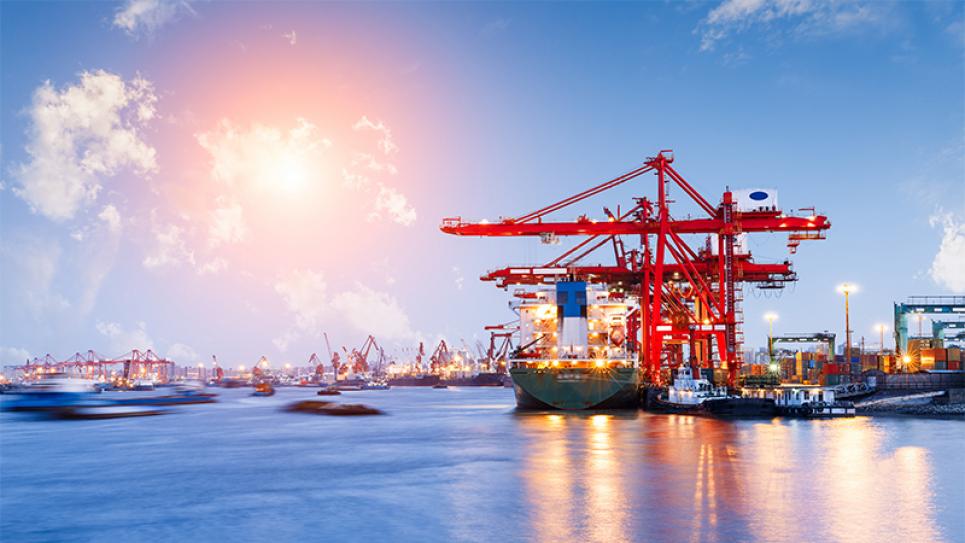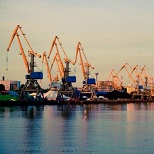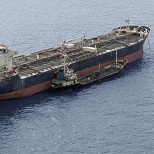Recent updates in the “Safe Port” warranties treatment
The issue of the port and berth safety is among those which raise various disputes between the interested parties. As the reasons for declaring the port or berth unsafe may be of wide nature, every dispute becomes unique and, hence, all the applicable rules shall be implied individually for each particular case.
There have been few developments in understanding the underlying rules for the interpretation of safety clauses and therefore determination of the respective responsibilities of the parties involved. However, before coming to the updates, it would be reasonable to review the fundamentals of the terms for the port safety.
The classic statement of safety was made in The Eastern City case in 1958. It has been consistently approved by the courts, including the House of Lords in The Evia (No. 2), and applicable to both ports and berths and to time charters and voyage charters. The definition is as follows:
"A port will not be safe unless, in the relevant period of time, a particular ship can reach it, use it and return from it without, in the absence of some abnormal occurrence, being exposed to danger which cannot be avoided by good navigation and seamanship."
This de?nition covers the physical characteristics of the port (or, where appropriate, berth), for instance its depth, searoom to manoeuvre, tides, etc., and also the characteristics of its fairways and approaches, as well as other non-physical circumstances (political, economical, social, etc.)
The definition is sort of wide while making reference to different stages of the voyage performance, namely a) entering the port; b) staying in port; and c) leaving the port.
a) Safe reaching the port or berth means a port or berth are going to be unsafe if the ship is unable to proceed to the port and to berth safely. For instance a port could also be considered unsafe albeit the ship suffers damage during its passage on a river or channel when approaching a port. The particular cases may prove that the appliance of this rule is wide, e.g. the approach can extend to significant distances like 100 miles, or the vessel has an air-draft which exceeds the available clearance under a bridge that has got to be passed whilst proceeding to the port, etc.
b) Safe stay at port comprises safety of the particular ship for the duration of her stay. A ship may enter a port which is safe and which subsequently becomes unsafe because of adverse weather for instance. A port will still be safe if the ship can safely leave the port which has become dangerous. What makes a port unsafe is actually an issue of fact: weather, inadequate berthing and mooring facilities, obstructions and defective navigational aids may render the port unsafe.
c) Safety requirement for departure from the port are usually of an equivalent nature as for entering the port, but, of course, the circumstances of ach case should be taken in consideration. As an example, the fully loaded vessel may safely reach the port and complete discharging operations, but would be unable to leave it as the air-draft in ballast becomes higher and subsequently does not provide sufficient clearance under the bridge.
It shall be noted, that dangers, which are avoidable by ordinary good navigation and seamanship won't render a port unsafe, thus not just existence of any obstacles is vital, but also the crew’s conduct within the course of voyage is essential.

While the technical theory of what actually constitutes safety of the port or prevents the port from being considered safe is quite clear and widely established in various authorities of different jurisdictions, another practical issue arises, i.e. the determination of the rights and obligations of the involved parties.
In general, the warranty of safe port is aimed to assist the owners and to offer them opportunities to avail from being exposed to any danger due to the fault or negligence of the charterers. Thus, under the general circumstances the owners are entitled to the following.
On the pre-voyage stage, when the master and the owner have just received the voyage instructions, they have on the primary instance the so-called “right to consider the order”, which by its nature is the right of the master and the owner to have a reasonable time to evaluate the order and decide whether it may be considered as valid for the safety purposes or not.
Then the owner’s right to reject the order steps in, if the master and owner decide that the ordered port would dispose the vessel to danger which, either under the contract or by virtue of implied terms, constitutes the unsafety of the port.
It is of utmost importance to note, that if the owner, with full knowledge of the facts, complies with an invalid nomination, he may lose his right to reject it thereafter or to terminate the charter, but he won't, just by so complying, lose his right to damages for loss caused by his compliance.
As the abovementioned provisions are general and may be used as the implied terms, this is of essence to have due regard to the constructions of the particular clauses of the charter party, which may alter the parties’ rights in some manner.
Some standard charter forms, for instance, the Exxonvoy, Asbatankvoy and the Norgrain forms, contain an express warranty on the part of the charterer’s obligations to safeguard the safety of the loading or discharging port or berth, but, to the contrary, the Gencon form itself contains no express warranty.
In the absence of an express warranty, the question arises on whether any warranty of safety should be implied. There are dicta, summarised by Morris L.J. in The Stork, which could be read as meaning that the implication of a warranty of safety is automatic. However, it's now clear that there are no any absolute rules and far depends upon the particular terms of each individual charter party.
Where the charter speci?es the loading port or place, no further act of identi?cation is required to enable the vessel to perform the voyage, and it appears to be accepted that, absence of any express warranty in the charter would be deemed as there is no implied warranty on the safety of the speci?ed port or place.
The position is the same, where the charter provides for the nomination of a port or place out of list of named ports or places, with none express warranty. Since all of the permissible ports are identi?ed by name, it is unnecessary to imply any undertaking on the part of the charterer that it is safe, and if the owner does not stipulate for an express warranty he may reasonably be assumed to be content to bear the risk of unsafety himself.
The next question is whether or not a warranty of safety should be implied where the charter provides for the charterer to nominate a port within a range, but which is not itself speci?ed by name. No ?nal decision has been reached on the question, which must ultimately depend on the terms of the charter in any particular case. However, where the charter confers a right of nomination of this nature it may, depending upon the terms of the charter as a whole, be appropriate to imply a warranty, in order to avoid imposing upon the owner a risk to which he cannot reasonably be assumed have assented.
The last scenario to be discussed is when the charter may specify that a berth to be nominated will be safe without giving any similar warranty in respect of the port, and vice versa.
Where the charter provides for the nomination of a berth, without express warranty, at a warranted safe port, the obligations as to the safety of the port can be taken to embrace the safety of the berth within that port selected by the charterer. If the port to be nominated must be safe, it follows that the berth to be nominated within the port must impliedly be safe.
On the other hand, where the charterer’s obligation is to nominate a warranted safe berth at a named port in relation to which no warranty is given, this brings with it no implication, at least as regards the approaches to the port, that the port also is safe.
However, while neither the port nor its approaches in this case have their safety impliedly warranted, the charterer’s express obligations as to the safety of the berth must include the approach to and departure from the nominated berth within the port itself.
There have been significant recent updates in the American case law in the subject matter, which in our opinion reflect the common tendencies as for the resolution of cases of the kind.
In The Asos case, the M/T Athos I, a 748-foot oil tanker, allided with a nine-ton anchor abandoned on the bed of the Delaware River. The anchor punctured the tanker’s hull, causing 264,000 gallons of heavy crude oil to spill into the river. As required by federal statute, the Athos I’s owner and the United States covered the costs of cleanup. They then sought to reclaim those costs from the company, which had chartered the Athos I for the voyage that occasioned the oil spill. According to the owners and the United States, the charterer had breached a contractual “safe-berth clause” obligating the charterer to select a “safe” berth that would allow the Athos I to come and go “always safely afloat.”
The question before the court was whether the safe-berth clause was a warranty of safety imposing liability for an unsafe berth regardless of charterer’s diligence in selecting the berth.
The safe berth clause here provided, that “[t]he vessel shall load and discharge at any safe place or wharf, ... which shall be designated and procured by the Charterer, provided the Vessel can proceed thereto, lie at, and depart therefrom always safely afloat, any lighterage being at the expense, risk and peril of the Charterer.”
The court then held that the safe berth clause embodied an express warranty of safety “made without regard to the amount of diligence taken by the charterer.” Thus, the charterer was held liable to compensate the owners and the United States the cleanup costs as they resulted in the charterer’s breach of the warranty of safety.
The conclusion may be made, that the current common law practice is ready to set the highest standards for the protection of the owners in the matters relating to the safety of the port warranties by applying the absolute responsibility of the charterers under the warranty terms. Meantime, there is still a room for limiting such liability by virtue of construction of the particular warranty clauses in the charter parties, thus upholding the common principle of freedom of contract. In other words, there becomes more clarity in the understanding of well-known principles, but their interpretation is subject to the circumstances of each particular case.
Specially for Maritime Risk International
(1).png)
Cargo transportation by sea is one of the most reliable and most expensive methods of goods delivery worldwide. Sea lines are one of...

A NEW INITIATIVE BY THE MINISTRY OF TRANSPORT AND INFRASTRUCTURE The new regulation that entered into force in 28 April 2021 has impo...

Dear colleagues, Here is Quarterly Shipping newsletter broght to you by Interlegal. Let us present the most valuable cases and n...

The issue of the port and berth safety is among those which raise various disputes between the interested parties. As the reasons for declar...

Although travel restrictions are beginning to ease, there are still restrictions in many countries impacting on crew changes. The new clause...
 Ship arrest in Ukraine: new approaches2020.06.18
Ship arrest in Ukraine: new approaches2020.06.18The concept of one shipowner – one vessel The concept of one shipowner – one vessel arose due to shipowners’ reasonable desire to secure...

Task The Client – large bunkering company making business in Black Sea Region – applied to Interlegal for debt recovery for bunker supply...

Dear Interlegal clients, Please be informed that in the third quarter of the 2019 year significant changes of Ukrainian legisla...

A presidential decree has been published in the official gazette on 03.05.2019 marking the date on which the 1999 Convention officially beca...
 LMAA arbitration notice clause2019.02.27
LMAA arbitration notice clause2019.02.27The LMAA has published a clause for use in arbitration agreements to facilitate effective notice by email (including for commencement of arb...




 Odessa, 65014, Ukraine, 1 а, Gretska St
Odessa, 65014, Ukraine, 1 а, Gretska St
